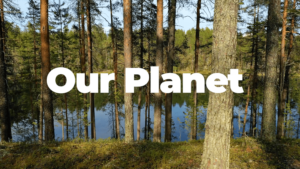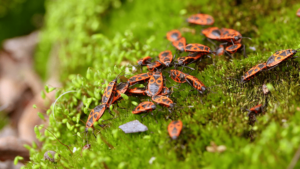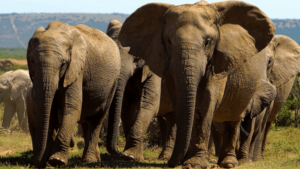___
By Rodaportal
INTRODUCTION
Behold our planet Earth, a wonderfully diverse and extraordinary place beyond comparison. From the verdant Amazonian rainforests to the icy Arctic tundras, our planet is home to an incredible diversity of habitats and ecosystems brimming with life. Our planet’s biological richness is remarkable, with 8.7 million plant and animal species thriving in its diverse ecosystems. The diversity of life on Earth is remarkable, from the vivid colours of coral reefs to the majestic majesty of elephants and whales.
Earth is a sensory feast, a beautiful display of nature’s strength and beauty. However, our planet’s beauty is not limited to the natural world. The complex fabric of human culture, art, and tradition that has emerged over millennia is a monument to our limitless inventiveness and innovation.
In this article, we will take you on a journey to explore the wonders of our planet’s diverse ecosystems, the rich biodiversity that inhabits them, and the importance of preserving these natural treasures. At the end, we invite you to watch our video for an even more immersive experience: [Watch the video here](https://youtu.be/NirACIcMur0).

Exploring the Different Ecosystems of Our Planet
If you’re a bold adventurer who enjoys unravelling the mysteries of the natural world, you’re in for a treat because Earth is home to an incredible diversity of ecosystems. Our globe is home to an unlimited diversity of ecosystems, from thick rainforests to arid deserts, just begging to be explored and studied.
One of the most fascinating aspects of Earth’s ecosystems is the incredible diversity that exists inside each one. Take the ocean, for example. From the sun-kissed shallows of coral reefs to the murky depths of the abyss, the ocean is home to an inexhaustible variety of marine species, each suited to thrive in its environment.
But it’s not just the ocean that’s alive and well. Every nook of our world is home to a unique variety of species that have evolved to thrive in their climate, from the frigid expanses of the polar regions to the blazing heat of the tropical rainforests.
And it’s not simply the living things that distinguish each environment. The geology, climate, and geography of each habitat also play an important role in shaping the ecosystem’s nature. Every ecosystem on Earth, from the Himalayan peaks to the African savannas, has its own distinct set of physical and environmental characteristics that make it unique.

Understanding and appreciating Earth’s different ecosystems is critical to our planet’s well-being and sustainability. By examining the many ecosystems and the distinct life forms that inhabit them, we can gain a greater understanding of the complicated web of life that exists on our planet and how we might protect and conserve it for future generations.
Our planet’s different ecosystems attest to the incredible beauty and complexity of the natural world. So, whether you’re an adventurer, a nature fanatic, or simply curious about the world around you, experiencing our planet’s various ecosystems will captivate and stimulate you.
Discovering the Rich Biodiversity of Earth
Earth has unrivalled biodiversity, with an estimated 8.7 million species of flora and wildlife demonstrating the planet’s distinctiveness. Each living organism is an amazing discovery, with unique adaptations and traits.
The various animal species that inhabit our globe are at the heart of our planet’s astounding biodiversity. Each species, from the majestic elephants and lions of the African savanna to the fun dolphins and whales of the world’s oceans, has its particular behaviours, habitats, and physical characteristics.
It is not simply the charismatic megafauna that contributes to Earth’s biodiversity. Numerous insect, bird, fish, and reptile species perform important roles in their ecosystems and are equally fascinating to study.
Furthermore, the biodiversity of the Earth is not confined to animals. The world also has an amazing variety of plants that are crucial to the planet’s ecosystems, ranging from towering redwoods to fragile daisies.
However, human actions like deforestation, pollution, and climate change are threatening the existence of innumerable plant and animal species, putting the planet’s ecosystems in jeopardy.

So, whether you’re appreciating the brilliant plumage of a tropical bird, watching a bee pollinate a flower, or simply strolling through a neighbourhood park, take a moment to wonder at our planet’s astounding biodiversity.
Preserving the Natural Wonders of Our Planet
As our planet’s population grows, so does the burden on its natural resources. The multiple risks to the health and sustainability of the natural world are overwhelming, ranging from excessive deforestation to rampant pollution and climate change.
However, there is cause for optimism: we can work together to protect and preserve the planet’s natural wonders for future generations. By committing to sustainable development goals and taking steps to conserve the planet’s resources, we can create a future in which the natural world thrives alongside human growth.
Prioritizing sustainable behaviours in all parts of life is critical to this objective. This entails reducing our reliance on fossil fuels and adopting renewable energy sources such as wind and solar electricity. It also means promoting environmentally friendly agriculture methods that protect the health of our land and waterways. Above all, it necessitates a commitment to sustainable development that considers the requirements of both the planet and human societies.
We can also seek to protect specific places on the earth that are especially vulnerable to human activity. This might include creating protected areas like national parks and wildlife reserves where natural habitats can be conserved and wildlife can thrive. That means assisting organizations that strive to safeguard endangered species from habitat destruction and poaching. It may also include taking steps to lessen our environmental impact, such as taking public transit, conserving water and electricity, and reducing waste.

Conclusion: Appreciating the Incredible Beauty and Diversity of Our Planet
As we’ve traversed the various ecosystems and witnessed the myriad of life forms on our planet, we’ve been struck by the stunning splendour and diversity that envelop us daily. But simply admiring nature’s beauty is insufficient; it must also be protected and nurtured.
It’s a grandiloquent ideal which we may all help to realize. So, Did you discover anything new today? Can you think of any other interesting fact we should include? Leave them in the comments section below; and don’t forget to [watch our video](https://youtu.be/NirACIcMur0) for an even more immersive experience, as we continue to explore the wonders of our planet and the importance of preserving its beauty and diversity.
